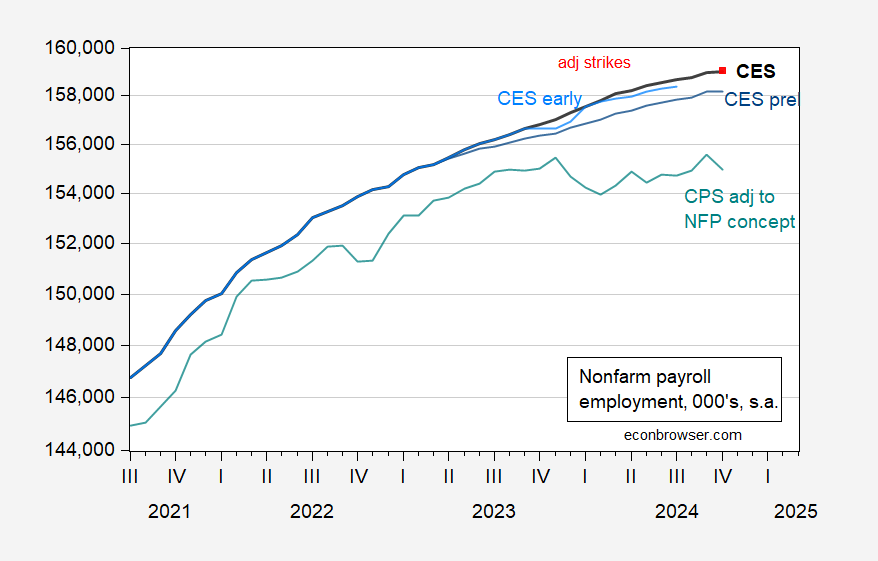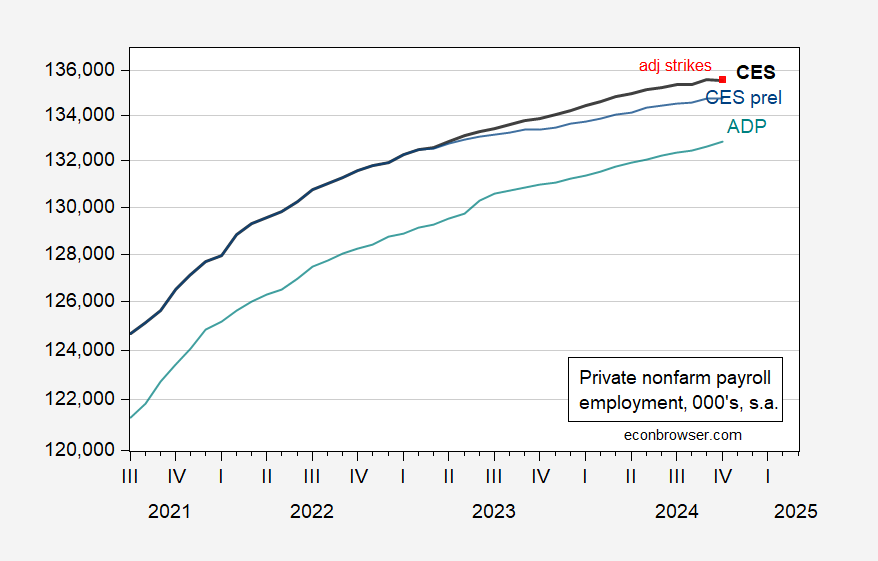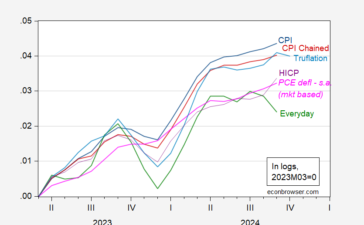NFP +12K vs. consensus +106K, private NFP -28K vs. +90K; but wage growth (0.4% vs. 0.3% m/m) and average weekly hours both above (34.3 vs. 34.2).
Figure 1: CES Nonfarm payroll employment (bold black), adjusted to add 41K for strikes as estimated by GS (red square), CES NFP preliminary benchmark (dark blue), Philadelphia Fed early benchmark adjusted by author (light blue), CPS adjusted to NFP concept (teal), all in 000’s, s.a. Source: BLS, Philadelphia Fed, Goldman Sachs, and author’s calculations.
To place the 12K change in context, the mean absolute revision in the change in NFP employment from 1st to 3rd release, 2003-present, is 57K. Here’s private nonfarm employment from CES, the preliminary benchmark, and the ADP.
Figure 2: CES private Nonfarm payroll employment (bold black), adjusted to add 41K for strikes as estimated by GS (red square), CES private NFP preliminary benchmark (dark blue), ADP private NFP (teal), all in 000’s, s.a. Source: BLS, ADP via FRED, Goldman Sachs, and author’s calculations.
Note that ADP registered a +228K for October, while the BLS CES indicated -28K. This reflects the difference in coverage (ADP has a heavier coverage of small establishments in services) and timing (the hurricanes hit during the CES reference period).
There is an CPS estimate of weather related unemployment. I add the change in the estimate to the reported civilian employment rate.
Figure 3: Civilian employment adjusted to NFP concept (bold black), adding in 506K unemployed due to weather (red square), and Civilian employment adjusted to incorporate CBO estimates of immigration by author (orange), all in 000’s, s.a. Source: BLS, Goldman Sachs, author’s calculations.
Adjusting indicates that it could be that without the hurricanes’ impact, civilian employment might’ve been unchanged.
In their assessment of today’s release, Goldman Sachs estimates underlying growth at 150K.









